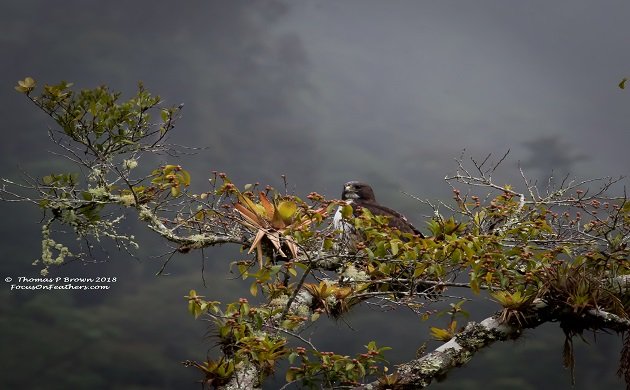
Ah, Costa Rica, so long I have dreamed of visiting you and your amazing birds. Well, here I am, and so far I love this place. We will be here for three full weeks, so I should get to see most of the major habitat zones before we leave, if only the weather will help us out.
As many of might know by now, we have covered a lot of ground this year, with Costa Rica being our ninth country visited. Needless to say, with our budget pretty thin, we have put this leg of our Little Big Year together as inexpensively as possible. After landing in San Jose ay close to 10:00 PM, we made our way to our first Air BnB just north of the airport. The next morning we were up and away towards Bajos de Toro, and the Aurora Mountain Lodge, well up in the higher elevations. The information about the lodge says that you might need 4×4 to get there. We did not, but in some nasty weather, that driveway/road might get pretty rough. The house is on a working farm, in the far back end of a large mountain valley and tremendous. After two nights, with one full day to bird in between, I had added 28 new birds to the Little Big Year list, and 21 new Lifers! A few of the highlights here were the Common Tody-flycatcher, Gray-headed Yellowthroat, Torrent Tyrannulet, Violet Saberwing, Purple-throated Mountain Gem, Gold-wing Warbler Short-tailed Hawk, and the Slate-throated Redstart.
Here is that Common Tody-flycather.

This lovely fellow is the Passerini’s Tanager, but the name is being switched to Scarlet-rumped Tanager at some point.
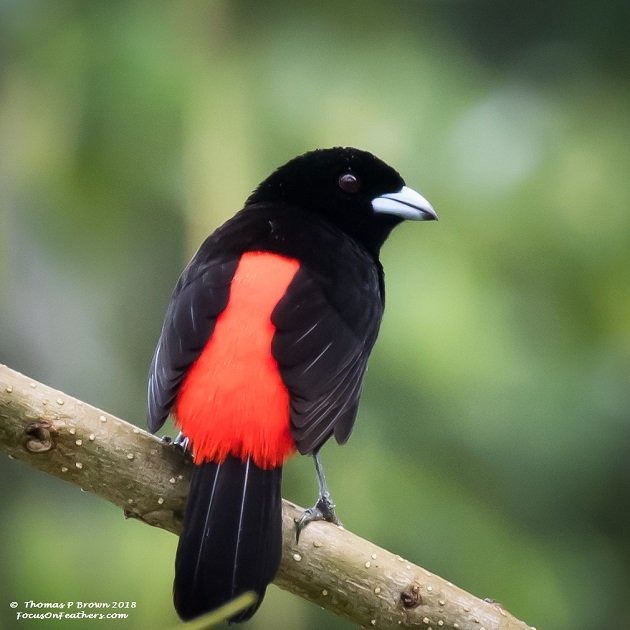
This is a repeat of the cover photo, but this is the Short-tailed Hawk, in the middle of the valley the lodge was located in.
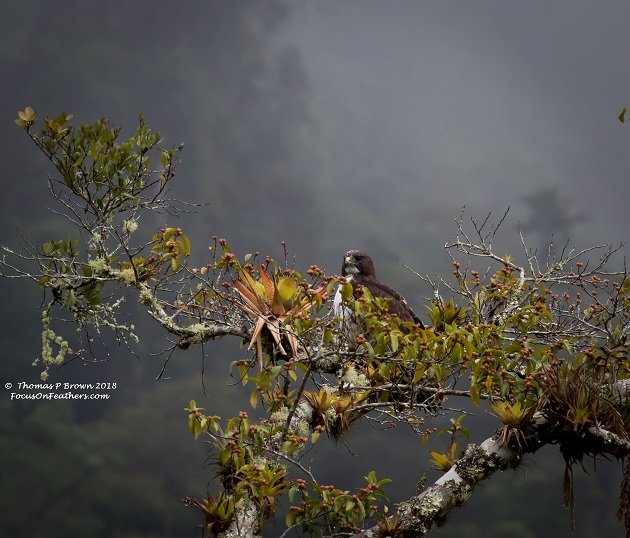
Here is that Slate-throated Redstart.
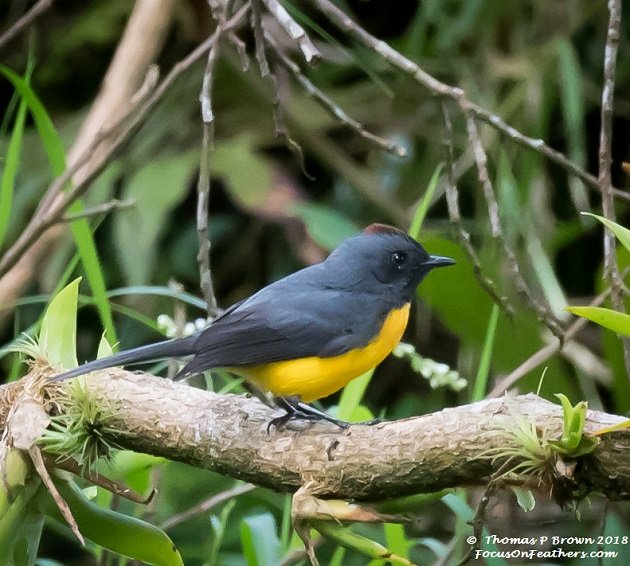
The owners have planted a large number of Bird-of-paradise plants, and this Violet Saberwing has taken position of them.
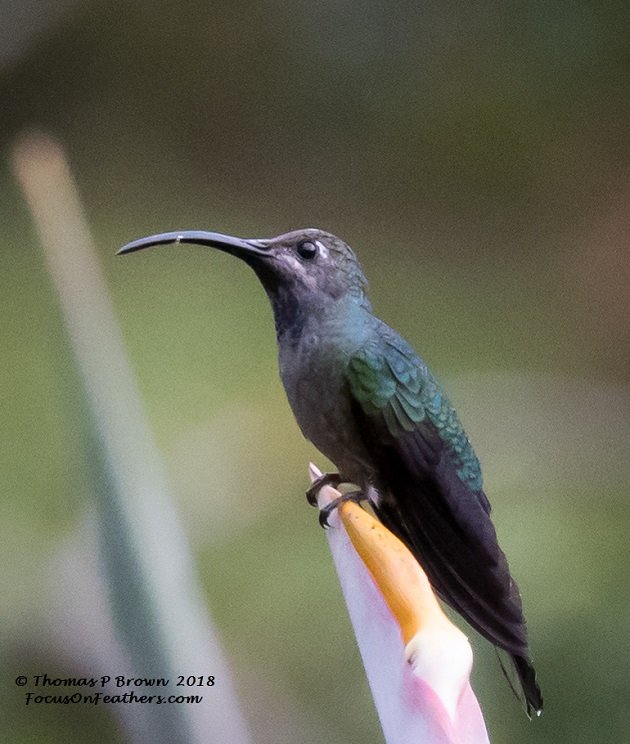
In addition to the Violet Saberwing, just as we were leaveing the lodge, this Scintillant Hummingbird landed right next to the door way.
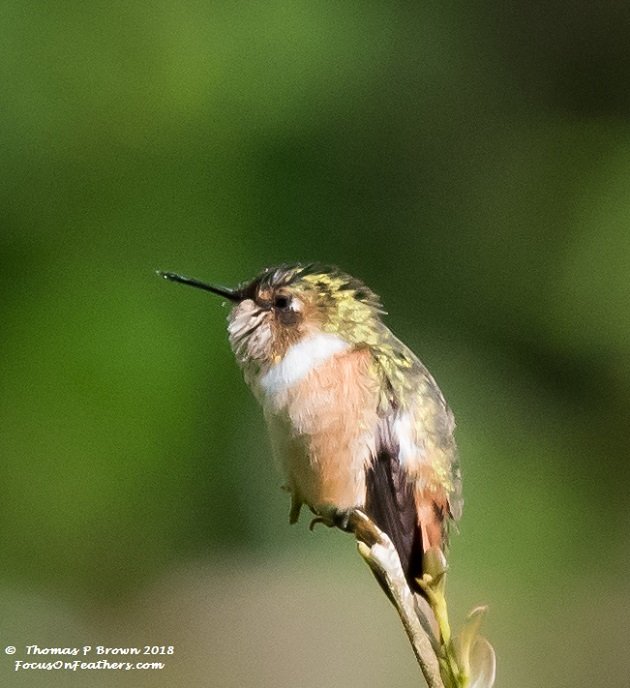
Our next stop was at the Hostel Casa Sarapiqui, which is on the property border of the De Silva Biological station. This reserve is well known in Costa Rica for an amazing amount of birds. The stay De Silva Biological Station, while well worth it, was a little bit more than we wanted to budget for, so the next best thing was staying right next door. We got our own kitchen, and run of the place as well as the 50 plus acres of a very nice variety of environments. We did get introduced to Geiner Huertas Reyes, who took us for a walk along part of the river and into a public park, where we put together a nice list of 61 species. Some of the highlights for here include my first Toucan, a Keel-billed Toucan, and the later in the day, a Collared Aracari. There were Montezuma Oropendolas, as well as Chestnut-headed Oropendolas, Red-lored Parrots, White-crowned Parrots, Black-headed Saltator, Black-cowled Orioles, tropical Pewees, Social Flycatchers, Greater Kiskadees, Rufous-tailed Jacamars, Keel-billed Motmot, Broad-billed Motmot, Red-leg Honey Creepers, Shining Honeycreepers, Broadwing Hawks, Gray Hawks, Gray-rumped Swifts, Mangrove Swallows, Long-billed Hermit, Plain Xenops, Long-tailed Tyrant, and the Buff-throated Saltator, just to name a few.
Here is a fun shot of a Groove-billed Ani, getting warmed up in a brief bit of morning sun.
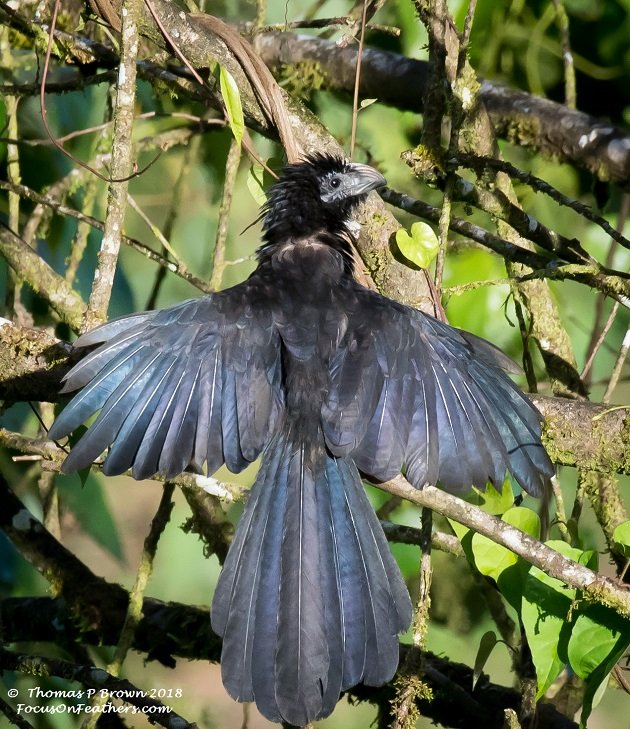
In a display of color that is almost unmatched, this Red-legged Honeycreeper is actually quite hard to photograph. The colors are so reflective that no matter what angle to took, they seemed almost as if they were a bad photo-shop job.
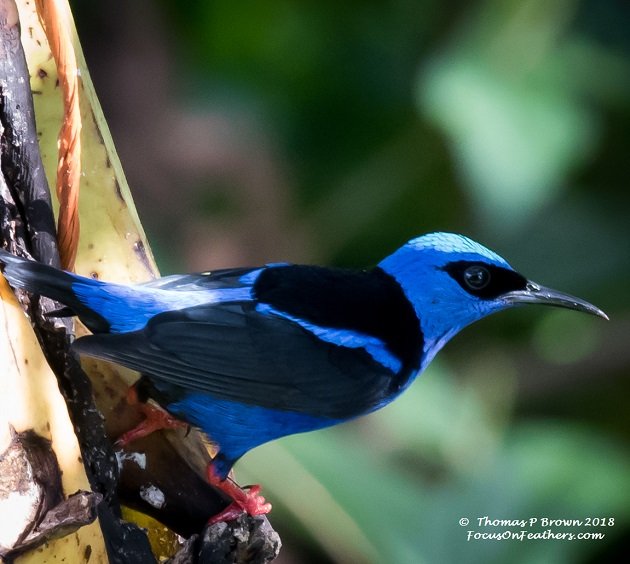
This Rufous-tailed Jacana was found in the park with Geiner.
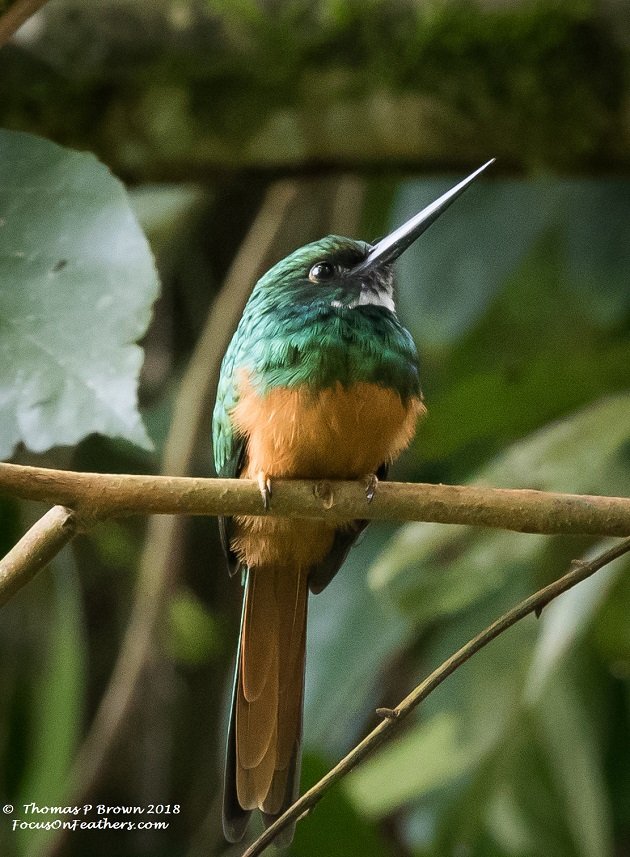
This Black-cheeked Woodpecker was shot right off the upper patio off our room.
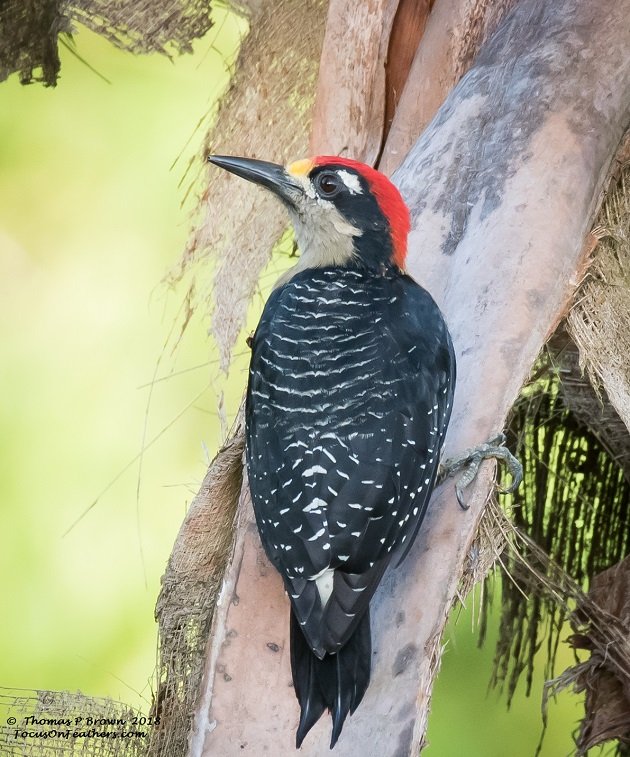
The local owner of the hostel had kept back a few hands of the bananas that were harvested on the farm, and hung them for the birds. This Collared Aracari was just one of several birds to stop by for a banana snack.
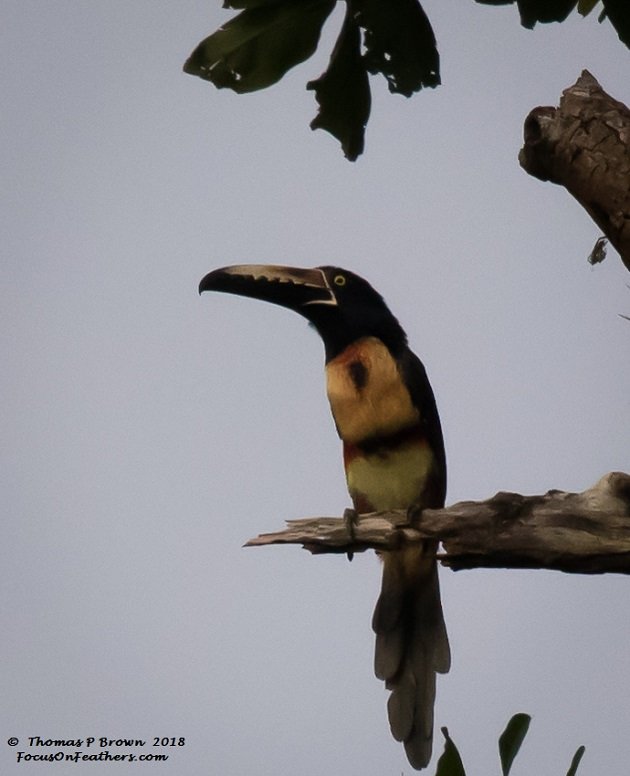
The rainbow colored bill on this Keel-billed Toucan, was my first ever toucan. I am quite sure that at some point there I giggled when I saw it.
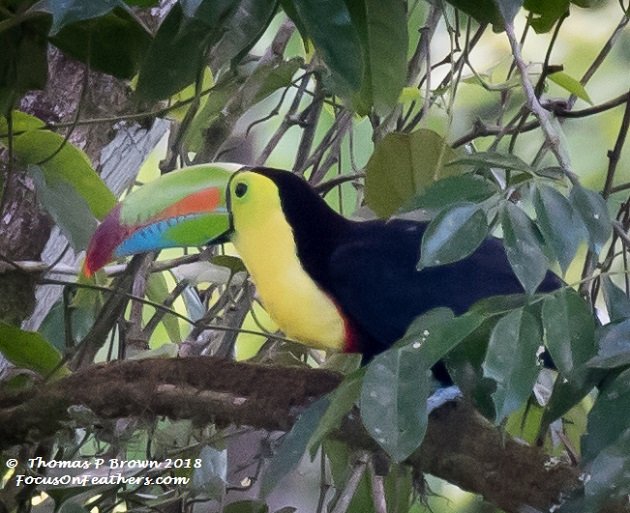
The Black-cowled Orioles turned out to be banana lovers too.
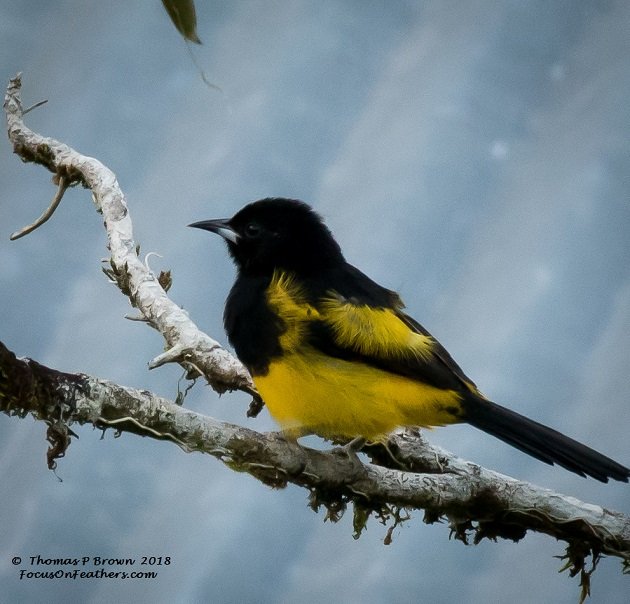
This is the only Black-headed Saltator I have seen all week, so I was quite glad to get this photo.
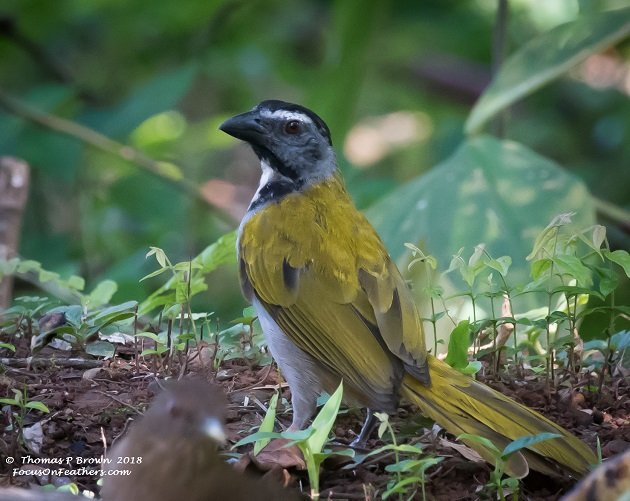
Costa Rica certainly has a few birds with some amazingly long names. This interesting bird is the Chestnut-headed Oropendola.
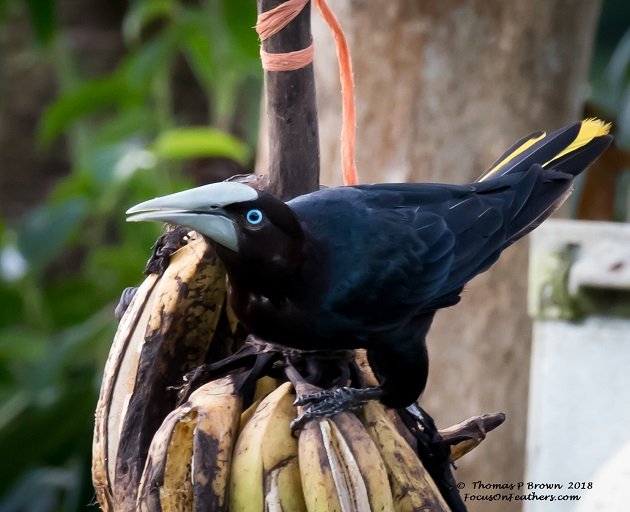
Another species in the long name category, would be this Common Chlorospingus.
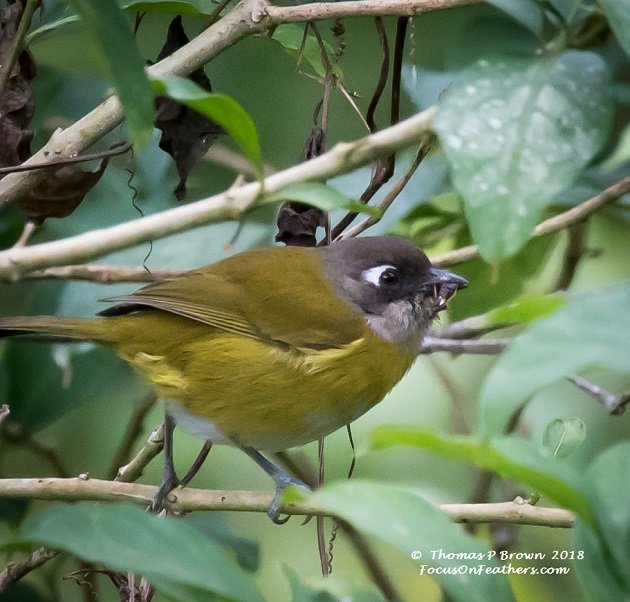
We have seen a pretty large number of Black Vultures, as well as both the resident, and the migrant Turkey Vultures in the last week. This King Vulture has been the only one we have been able to spot.
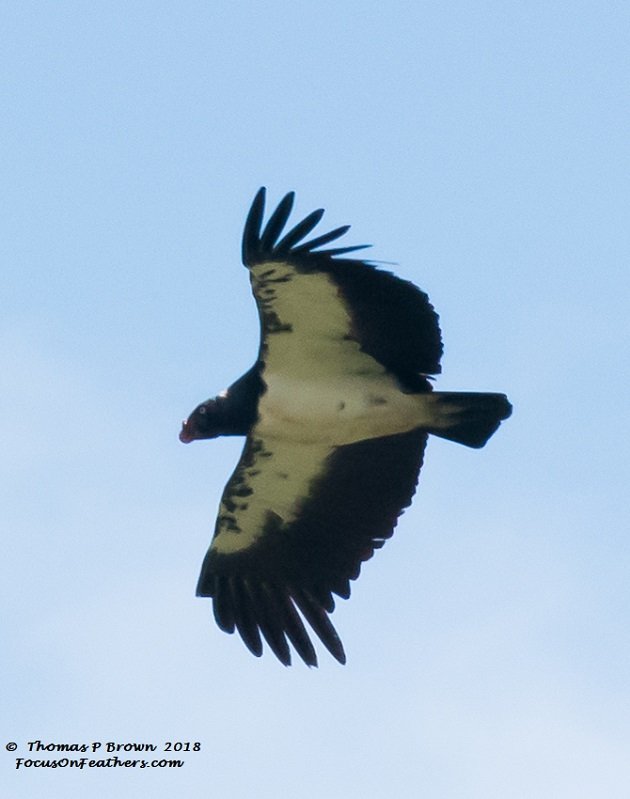
After this stay, we were on our way north, very close to the Nicaraguan border, and the Cano Negro Wetland. We had scheduled a guided river trip here, in hopes to find some of the hard to locate water based species. This time we were staying at the Cano Negro Wetland Lodge, a nice group of casitas, with an owner run kitchen area that also provided meals if you should choose. The grounds around the lodge had enough birds to keep me busy, and our morning on the river helped us put together a list of 57 species. Some of the highlights for this area are Sungrebes, Black-headed trogons, Slaty-tailed Trogon, Pacific Screech Owls, Jabirus, Wood Storks, Roseate Spoonbills, Boat-billed Heron, Squirrel Cuckoos, Amazon Kingfishers, Ringed Kingfishers, Green Kingfishers, American Pygmy Kingfishers, Belted Kingfishers, Blue-gray Tanagers, Gray-necked Wood-rails, White-fronted Crakes, Roadside Hawks, White-tailed kites, Northern Jacana, Prothonotary Warblers, Yellow Warblers, Olive-sided Warblers, Bare-throated Tiger-heron, Rufescent Tiger-heron, Green Ibis, Lineated Woodpecker, Paled-billed Woodpecker, and the Golden-olive Woodpecker, again, just to name a few.
Here is that Gray-necked Wood-rail, a bird that has been recently split and is now called the Russet-naped Wood-rail.
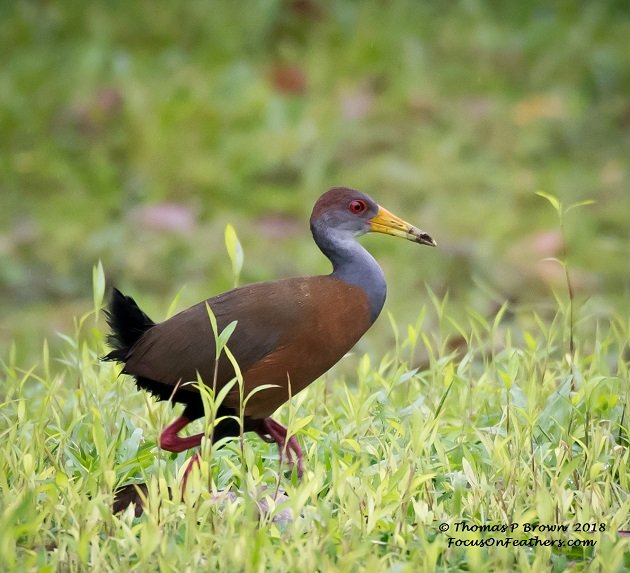
The Jabirus stayed quite a way away, but Jeanne and I got to watch this pair go thru several versions of a mating dance. Trading off a twig, wrapping necks, jumping up and down…they covered them all.
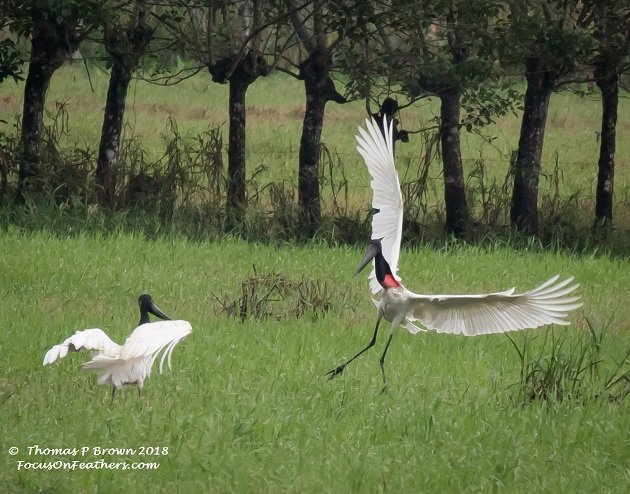
The morning we were on the boat, it pretty much never quit raining, sometimes a little, sometimes it came down in biblical proportions. This Slaty-tailed Trogon just never got us a great look, and when it was open, it was dumping rain.
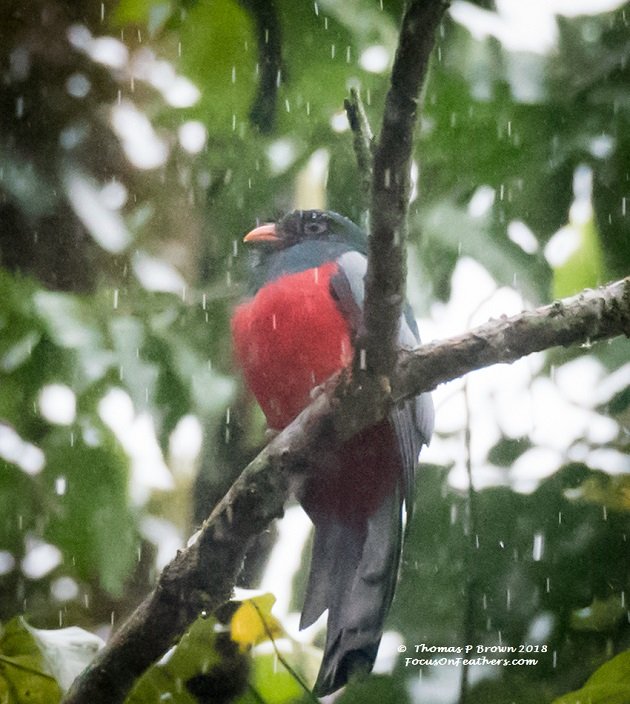
This Squirrel Cuckoo, gave me my favorite photo of the trip so far.
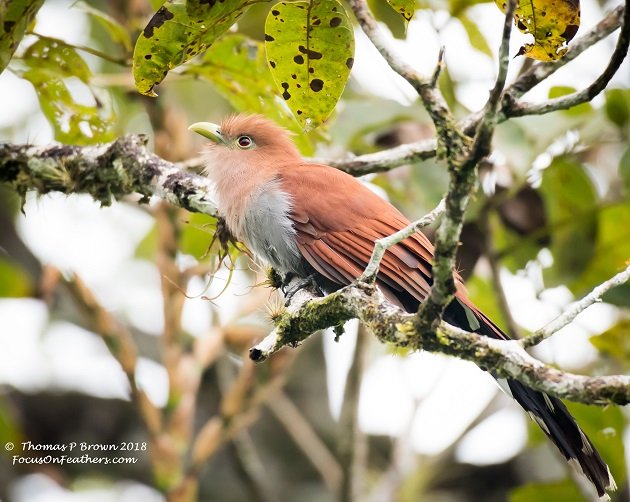
I had hoped to find the Sunbittern and the Sungrebes on this leg. Oh well, one out of two with this awesome Sungrebe.
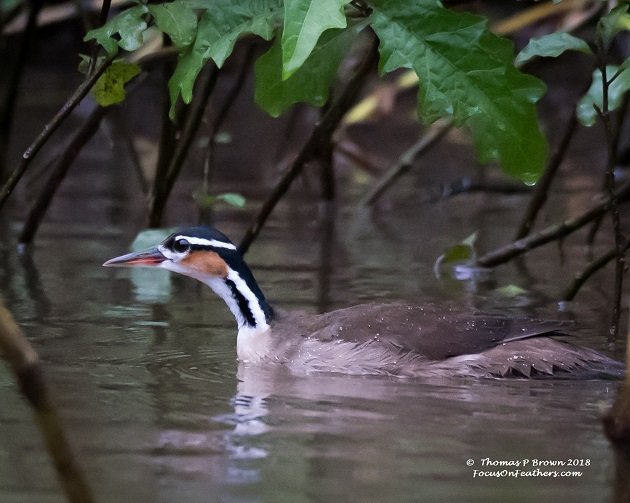
This Ringed Kingfisher is really big, but it still had a real mouth full with this fish. After bashing it on a branch to kill it, it did finally get it swallowed.
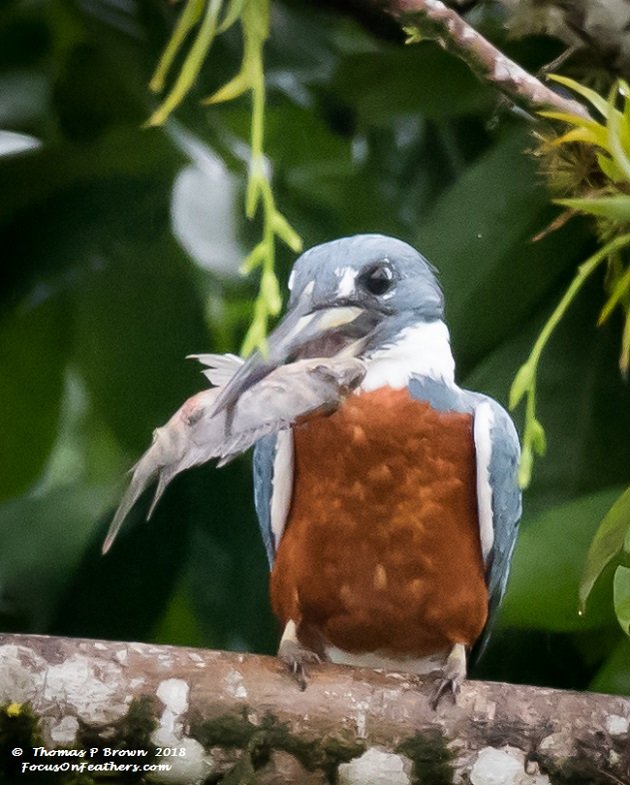
This is the female Ringed Kingfisher pictured below.
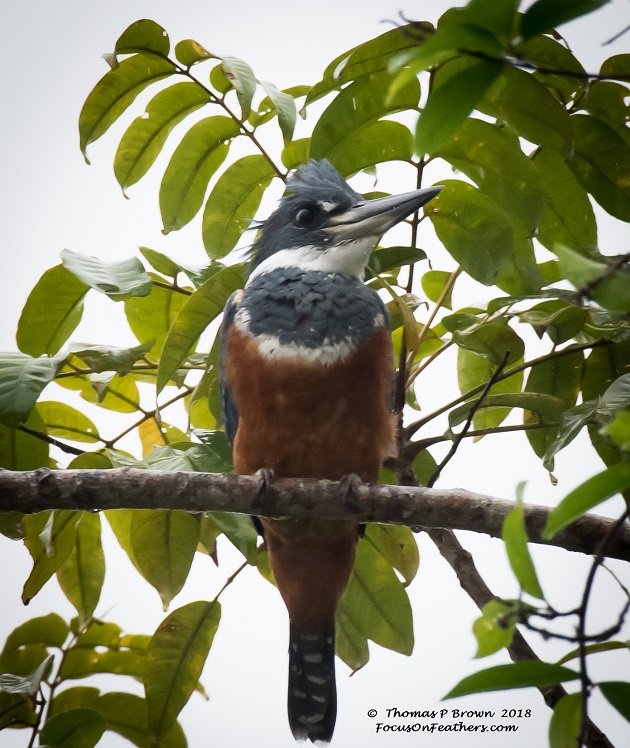
We found this Boat-billed Heron hiding back in a gap in the trees.
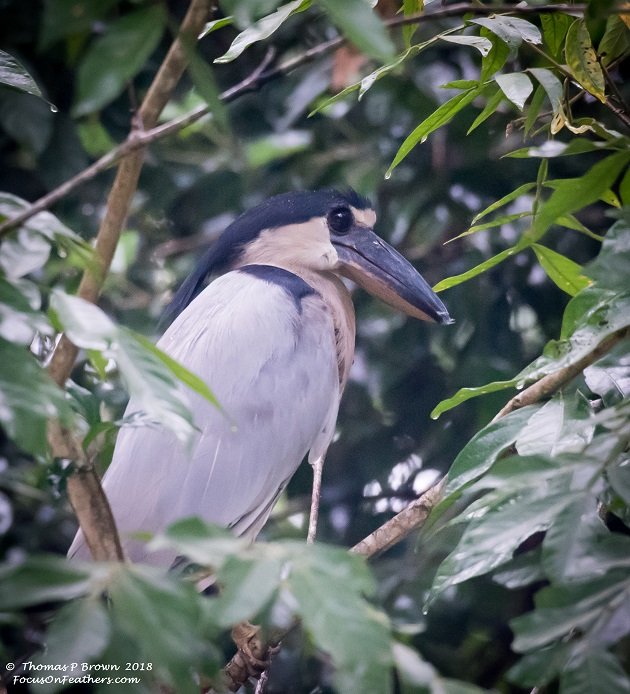
I have been able to track down quite a few of the Bare-throated Tiger Herons, but only one of the Rufescent Tiger Herons, seen here in all its bared glory.
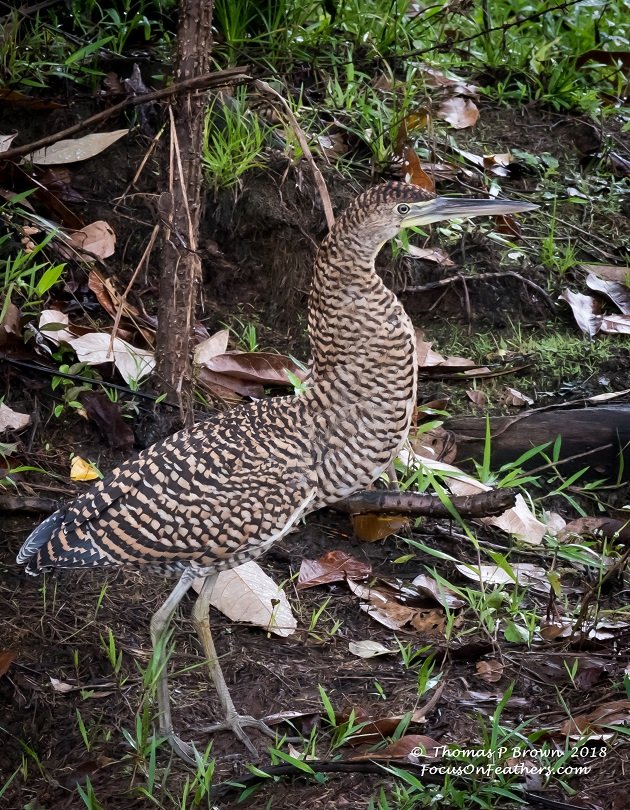
I guess when it rains, you go looking for an umbrella, even if you are a Blue-gray Tanager.
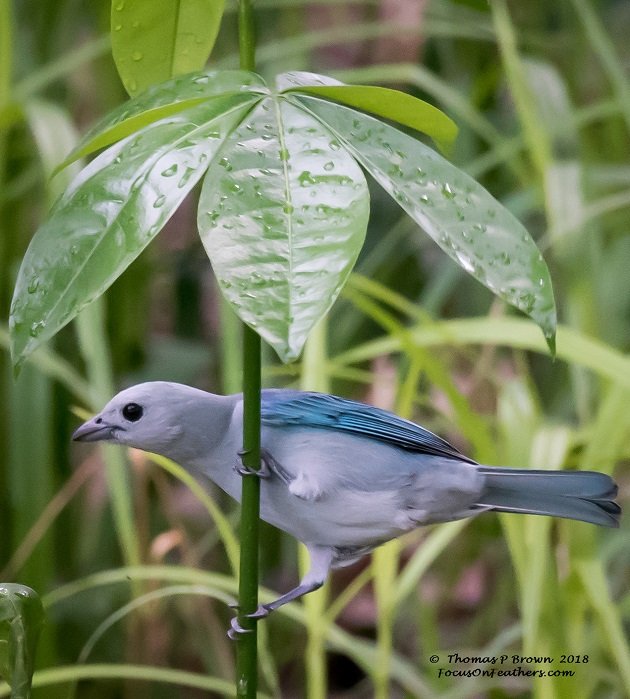
I have had a tough time tracking down any owls, but we did find this pair of Pacific Screech Owls. The second bird stayed well hidden off to the right side.

The first week has everything I could have hoped for and more. The second week will find us going down the west side of the country, almost to Panama. If the weather will hold, I hope to put some pretty good numbers together by the end of next week. So far things are looking like this, for the Little Big Year.
As a side note, the birds that ended up being my 1000th bird of the year was the Green-breasted Mango Hummingbird, which unfortunately, I never did get a photo of!
Little Big Year Species – 1045
eBird.org submissions – 335
Costa Rica species – 164













Leave a Comment